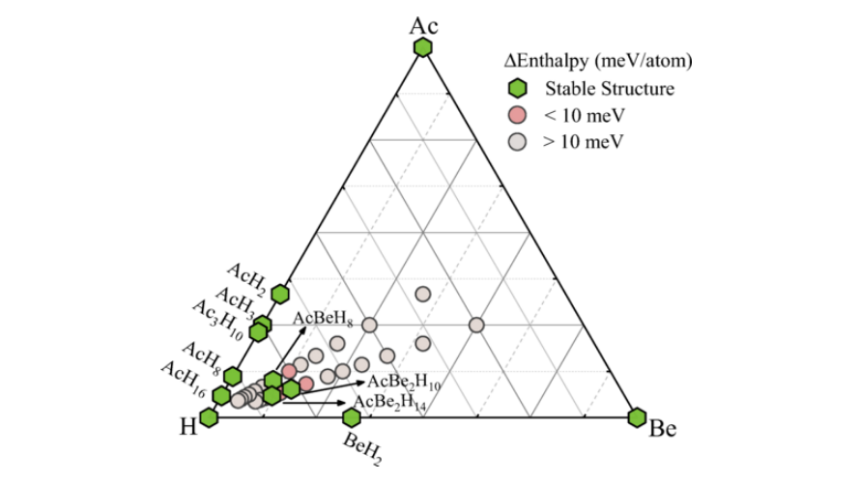Prediction of high-Tc superconductivity in ternary actinium beryllium hydrides at low pressure
Hydrogen-rich superconductors are promising candidates to achieve room-temperature superconductivity. However, the extreme pressures needed to stabilize these structures significantly limit their practical applications. An effective strategy to reduce the external pressure is to add a light element M that binds with H to form MHx units, acting as a chemical precompressor. We exemplify this idea by performing ab initio calculations of the Ac–Be–H phase diagram, proving that the metallization pressure of Ac–H binaries, for which critical temperatures as high as 200 K were predicted at 200 GPa, can be significantly reduced via beryllium incorporation. We identify three thermodynamically stable (AcBe2H10, AcBeH8, and AcBe2H14) and four metastable compounds (fcc AcBeH8, AcBeH10, AcBeH12 and AcBe2H16). All of them are superconductors. In particular, fcc AcBeH8 remains dynamically stable down to 10 GPa, where it exhibits a superconducting-transition temperature Tc of 181 K. The Be–H bonds are responsible for the exceptional properties of these ternary compounds and allow them to remain dynamically stable close to ambient pressure. Our results suggest that high-Tc superconductivity in hydrides is achievable at low pressure and may stimulate experimental synthesis of ternary hydrides.
Read the article in Physical Review B.
